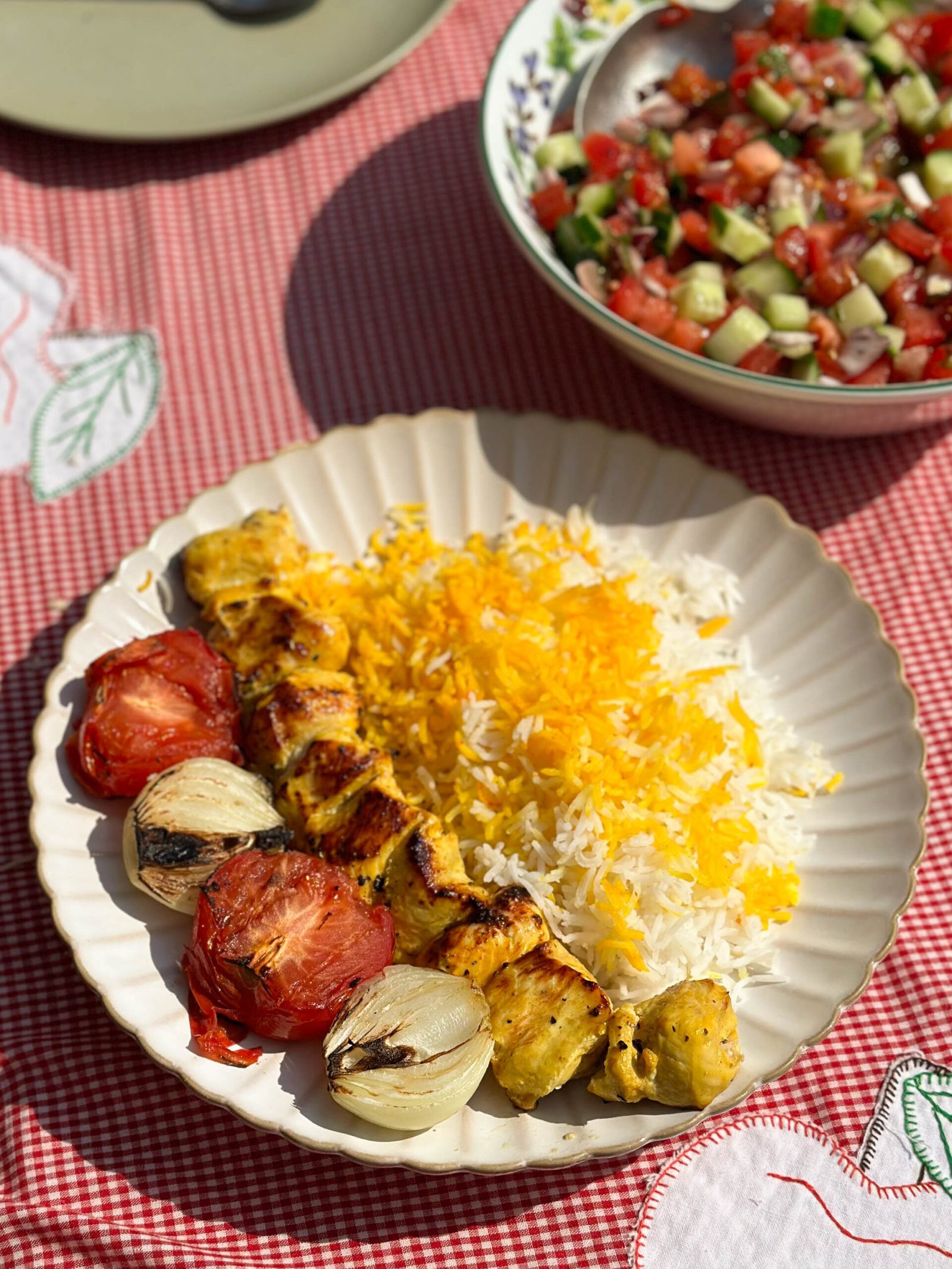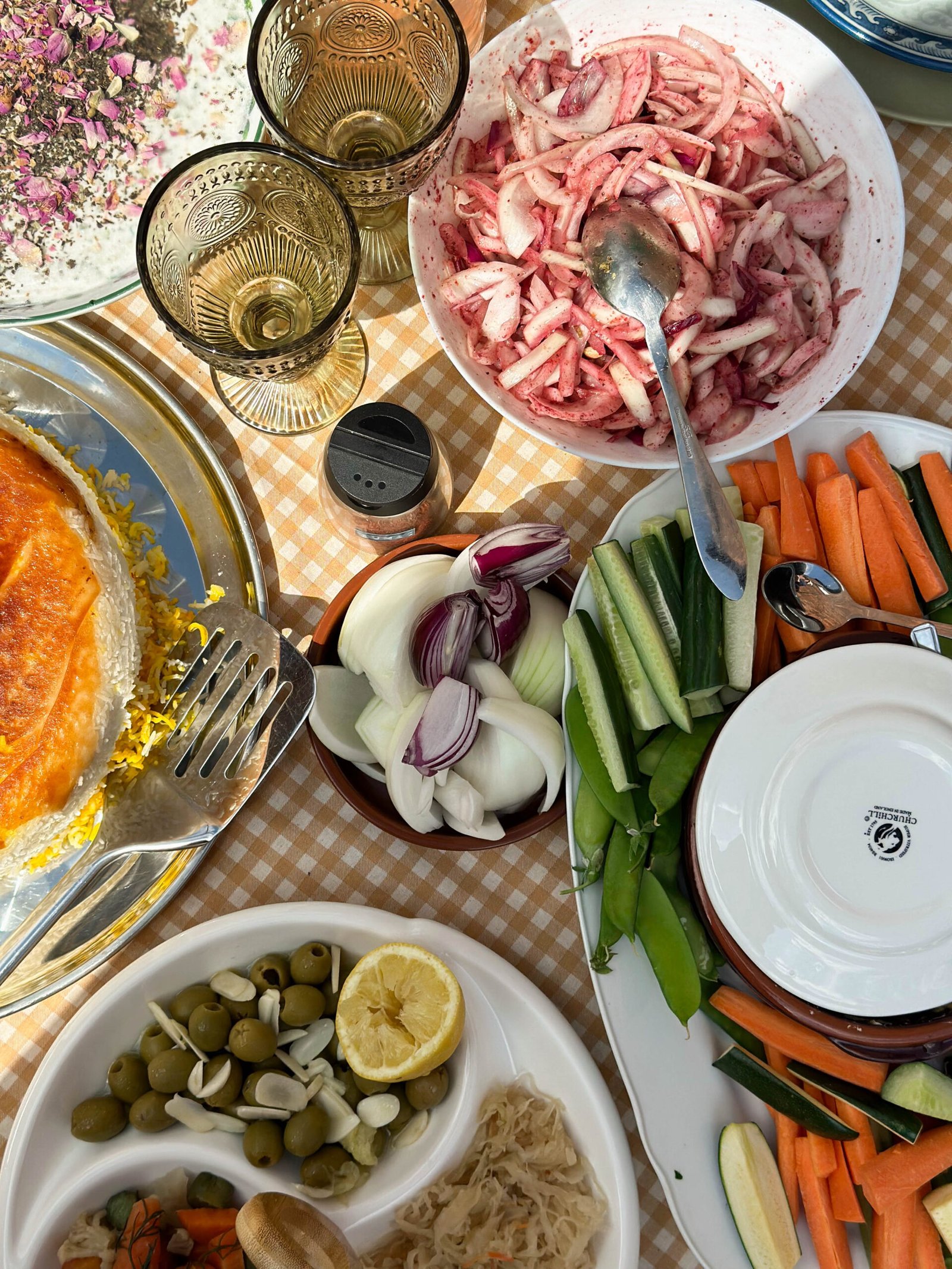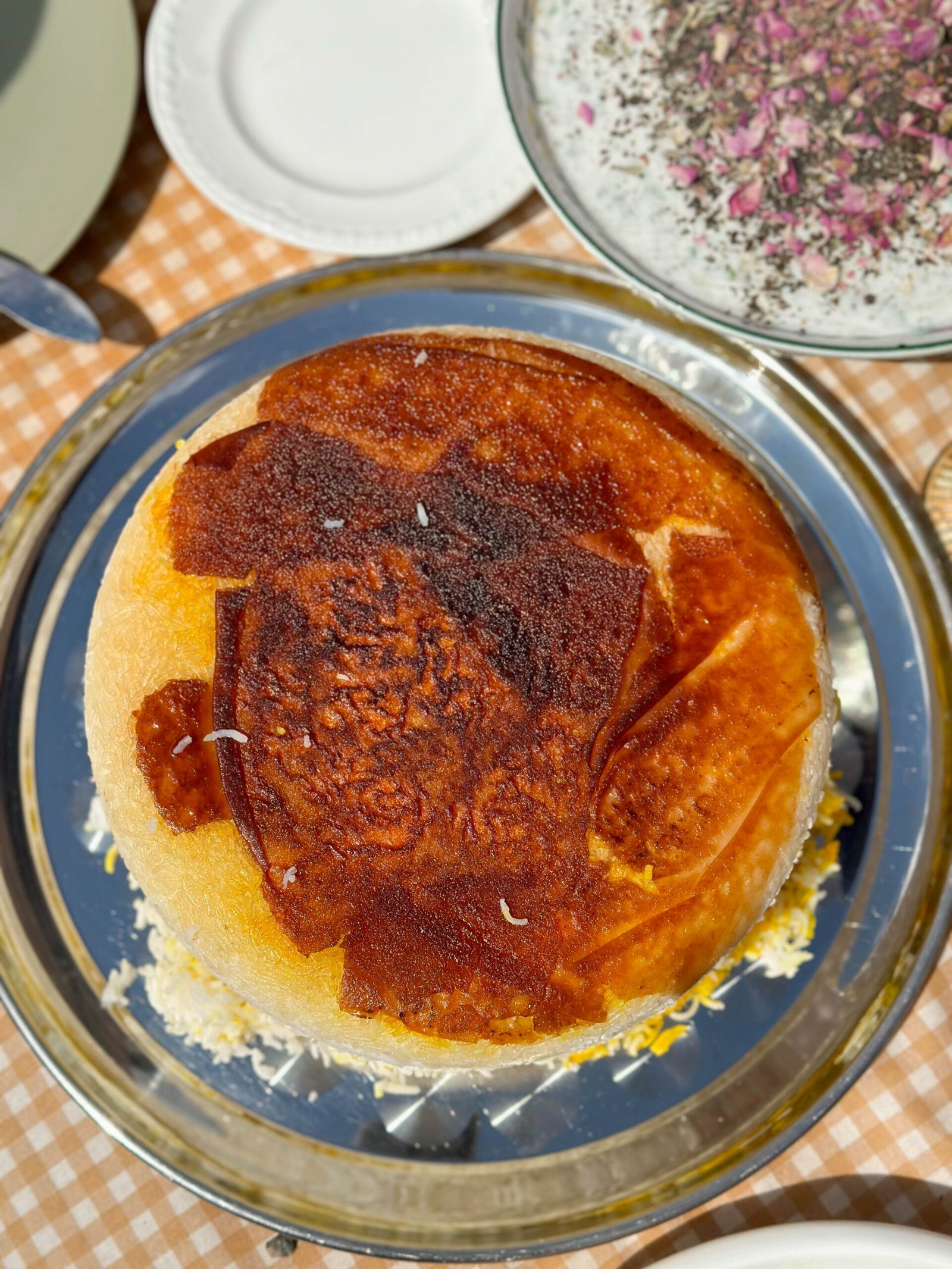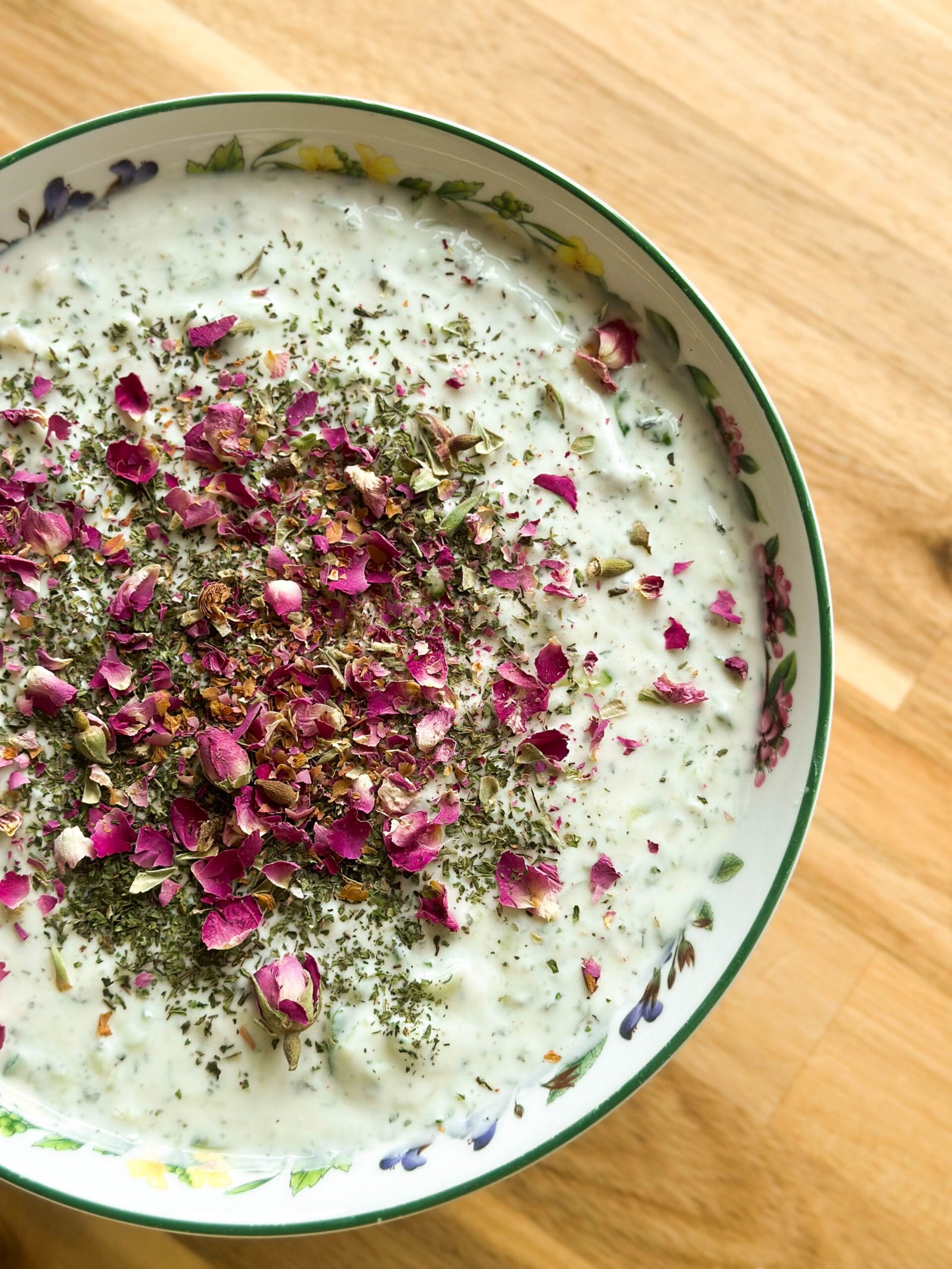Joojeh Kabab is a beloved Persian dish featuring succulent chicken marinated in a blend of saffron, yogurt, lemon juice, and spices. This dish is a staple in Persian cuisine and is cherished for its tender, flavorful meat and aromatic profile. Compared to other Middle Eastern kabob dishes like Shish Tavouk, Joojeh Kabab stands out due to its distinct saffron infusion, which gives the chicken a unique golden hue and rich, aromatic flavor.
A Taste of delicious flavours

Saffron’s Role in Persian Cuisine and the Unique Charm of Joojeh Kabab
Persian cuisine is renowned for its generous use of saffron, often found in rice dishes and marinades or pretty much in most Persian dishes. Saffron imparts Joojeh Kabab with its striking yellow colour and distinctive flavour. If you have saffron on hand, this Joojeh Kabab Recipe is one of the many excellent ways to utilise it.
The term “Joojeh” means “young chicken” or “baby chicken” in Persian, emphasising the tenderness of the meat used in this recipe. Whether you choose bone-in or boneless chicken, the latter—using either breasts or thighs—is typically marinated for a minimum of 4 hours but preferably 24-48 hours then threaded onto metal skewers and grilled over charcoal for optimal flavour.
Joojeh Kabab is traditionally served with saffron rice and grilled tomatoes, as commonly seen in restaurants. Alternatively, it can be enjoyed with lavash bread and a side of Shirazi salad.

What competes with Persian Saffron Kabob?
This dish is similar to the Lebanese Shish Tawook, as both feature a yogurt-based marinade. However, Joojeh Kabab stands out with its yellow hue, thanks to saffron, grated onions, and lemon juice. In contrast, Shish Tawook has a reddish in colour from the addition of tomato paste and garlic in its marinade. If saffron is not readily available, consider trying other popular Middle Eastern chicken dishes, such as chicken shawarma or chicken doner.

The Importance of Saffron and How to Bloom It
Saffron, often called “red gold,” is a crucial ingredient in Joojeh Kabab. It imparts a unique flavor and vibrant color to the dish. There are two popular methods to bloom saffron: the hot water method and the ice method.
Grinding the Saffron
What I am about to explain is second nature to us Iranians, you will never see us use saffron strands as is. Every time I see anyone do this I immediately think, ‘You’re not letting these gorgeous golden strands work their magic and shine like they truly deserve!’
So, start by grinding the saffron threads into a fine powder using a mortar and pestle. This helps release the full flavour and colour of the saffron.
Hot Water Blooming Method
- Place the ground saffron in a small bowl.
- Boil the water and allow to cool down for a few minutes before submerging the powder in hot (but not boiling) water.
- Cover the top and allow it to steep for about 10-15 minutes. The water will turn a deep yellow-orange colour.
Ice Blooming Method
- Place the ground saffron in a small bowl.
- Add a few ice cubes to the saffron.
- Let it sit at room temperature until the ice melts completely. This method is believed to preserve more of the delicate aromas and flavours of the saffron.
The method you choose to use depends on how much time you have. I am often pressed for time and choose the hot water method. It is also the method I am most familiar with as I have always seen my family do it this way.

How Joojeh Kabab is Served in Iran
In Iran, Joojeh Kabab is traditionally served with saffron rice (chelow), grilled tomatoes, and a side of fresh herbs like basil, mint, and parsley. Often, it’s accompanied by a tangy yogurt Mast-o-Khiyar, Borani Esfenaj, Salad Shirazi Lavash and of course Saffron Rice with Tahdig. Kebab dishes are a significant part of Iranian culture, often enjoyed during festive occasions, family gatherings, and picnics. The ritual of grilling kabobs and sharing them with loved ones highlights the communal aspect of Persian cuisine.

I still remember my family always preparing giant tubs of marinated meat; chicken, shish and minced lamb for Koobide to be exact. Someone in the family was guaranteed to bring along the ‘Manghal’ (BBQ) and the rest was history. I still remember the taste and aroma of the meat sizzling by the sea, lake or in the heart of forests and mountains. The men grilling away and the women getting the ‘Sofre’ (table on the ground) ready with the plates, drinks and most importantly the sides.
The perfect side

Steps for this Joojeh Kabab Recipe
Ingredients
- 1 kg boneless chicken breast or thighs, cut into 2-inch pieces
- 2 large onion, grated
- 1/2 cup plain yogurt (tenderizes the meat)
- 1/4 cup fresh lemon juice (adds acidity and flavor)
- 1/4 cup olive oil (adds moisture and helps with grilling)
- 1/2 teaspoon ground saffron threads, dissolved (provides aroma and color)
- 1/2 teaspoon turmeric (enhances the flavour)
- 2 teaspoons Salt
- 2 teaspoons Pepper (this down to personal preferences, less for less spicy)
- 125g butter for basting
- Wooden or metal skewers
- Sumac to garnish
Instructions:
Prepare the Marinade: Peel and cut the onions long ways so that you end up with the onions in shreds. In a large bowl, combine the onion, yogurt, lemon juice, olive oil, bloomed saffron (using either blooming method), turmeric, salt, and pepper.
Marinate the Chicken: Add the chicken pieces to the marinade, ensuring they are well-coated. Cover the bowl and refrigerate for at least 4-6 hours, preferably overnight.
Prepare the Grill: If using wooden skewers, soak them in water for at least 30 minutes to prevent burning. Preheat your grill to medium-high heat.
Skewer the Chicken: Thread the marinated chicken pieces onto the skewers, leaving a little space between each piece for even cooking (see above).
Grill the Kabobs: Place the skewers on the preheated grill. Cook for about 10-15 minutes, turning occasionally, until the chicken is fully cooked and has a nice char. melt the butter and 2 minutes before removing off the grill baste the butter continuously over the chicken.
Serve: Remove the chicken from the grill and let it rest for a few minutes. Serve with saffron rice, grilled tomatoes, fresh herbs, and a side of yogurt sauce.

Frequently Asked Questions
1. What type of chicken is best for Joojeh Kabob?
Boneless chicken breast or thighs are typically used for Joojeh Kabob. However, bone-in chicken can also be used if preferred.
2. How long should I marinate this Persian saffron chicken?
For the best results, marinate the chicken for at least 4 hours, preferably overnight. This allows the flavors to fully penetrate the meat.
3. Can I use other spices if I don’t have saffron?
While saffron is essential for authentic Joojeh Kabab, you can substitute with a pinch of turmeric for color. However, the unique flavor of saffron will be missing.
If you do make this recipe, please take a moment to leave a review, comment or or any questions you may have.
Also tag me on Pinterest or Instagram so I can see your work of art! Not only is it my favourite thing to scroll through and see what you are all making. But it also brings me so much happiness to see my hard work is beneficial to you all 🙂
This is the best place to reach me, and I’d love to hear from you.
Love, Nelly 🙂
Recipes You Must Try
- Persian Saffron Rice with Tahdig
- Tavuk Döner Kebab
- Shirazi Salad
- Borani Esfenaj – Persian yogurt Dip

Joojeh Kabab (Persian Saffron Chicken Kabob)
Ingredients
Instructions
-
In a large bowl mix the shredded/chopped onions with yogurt, lemon juice, bloomed saffron, olive oil and spices until fully combined. Add the chicken and cover to rest in the fridge over night or for at least 4-6 hours.
-
Thread the chicken cubes onto skewers on the flat side so they all sit on the skewers unified. Place skewers on the grill to cook. Do not overcook as the chicken can lose too much moisture and become dry. Keep flipping the skewers on each side so every side becomes equally golden.
-
In the last 2 minutes, melt the butter and brush the melted butter all of over the chicken while on the grill. This will make the chicken even juicer.
-
Remove the chicken and grill the tomatoes and onions on skewers for a few minutes until charred.
-
Serve with saffron rice, salad shiraz, borani esfenaj, and lavash bread.



We love Persian food and it’s so nice to finally be able to make it at home. This was the most delicious chicken ever. Thank you for the most fantastic recipe 🙂
thank you so much, this is everything i could ask for 🙂